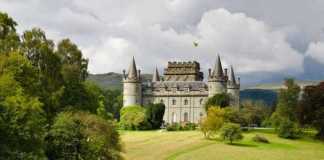Hungary is in central Europe and is a country close to my heart. My grandmother was Hungarian, and I spent many happy summers there when I was a teenager. Often called the ‘Pearl of the Danube’, it is a country with an interesting history and a rich culture. The capital is Budapest through which the majestic Danube flows, and here you will find many architectural marvels, great restaurants and bars, and some of the best thermal spas in Europe.
Food and wine are important to the Hungarians, and they enjoy a hearty diet as well as beautiful cakes and pastries. I still remember the cakes my aunt used to bake every day, especially the ones with flaky pastry and filled with fresh cherries. Hungarian wine is underrated, and they produce some of the best wines in the world. Hungarians also love music and art, and the cultural scene is prominent throughout the country, especially in the capital. Hungarians are friendly people who welcome visitors warmly to their country. These are some of the things that Hungary is famous for.
Contents
What Is Hungary Known For
Tours And Tickets
- Memento Park: Official Guided Tour with Entry Ticket – learn about the communist era in Hungary.
- Budapest Card – save money on public transport and 30+ top attractions and tours.
1- Buda Castle
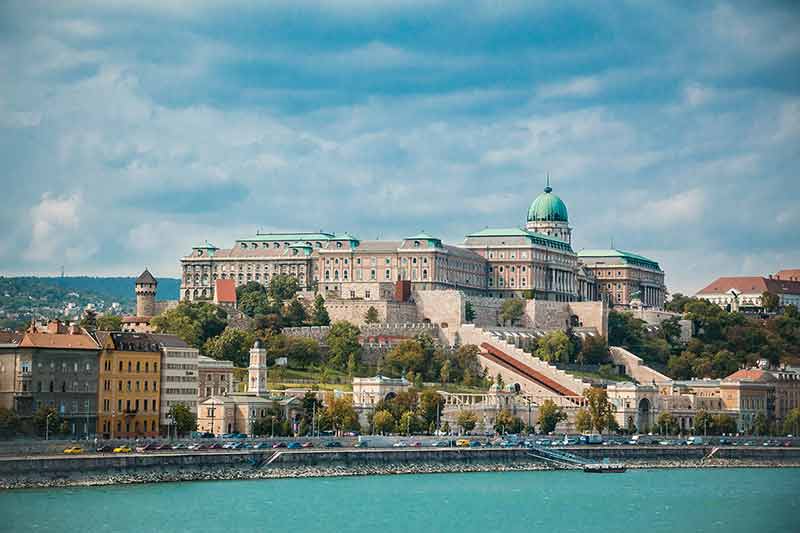
Buda Castle on Castle Hill is a UNESCO World Heritage Site and one of the highlights of Budapest that should be on every traveller’s itinerary.
It was built in the 13th century for the Hungarian royal families, but most of it was rebuilt in the 18th century in the Baroque style.
The impressive building has stunning views of the river Danube but unfortunately, a substantial part of the interior was destroyed during WWII, although some parts remained intact and are open to the public.
In the main part of the castle, you will find the Hungarian National Gallery which showcases Hungarian art from the 11th century to the present.
Medieval, Renaissance and Gothic artworks take centre stage.
In the restored south wing, the Budapest Castle Museum tells the story of Budapest going back 2,000 years.
You will see a wide range of artefacts, such as Gothic sculptures and medieval tapestries.
Also worth visiting are the Museum of Military History, the Royal Chapel and the National Library.
Underneath Castle Hill is a massive network of underground caves which were built to be cellars and bomb shelters.
It is possible to take a guided tour of these caves.
Buda Castle is at Szent Gyorgy ter 2, 1014, Budapest.
2- The Hungarian Parliament Building
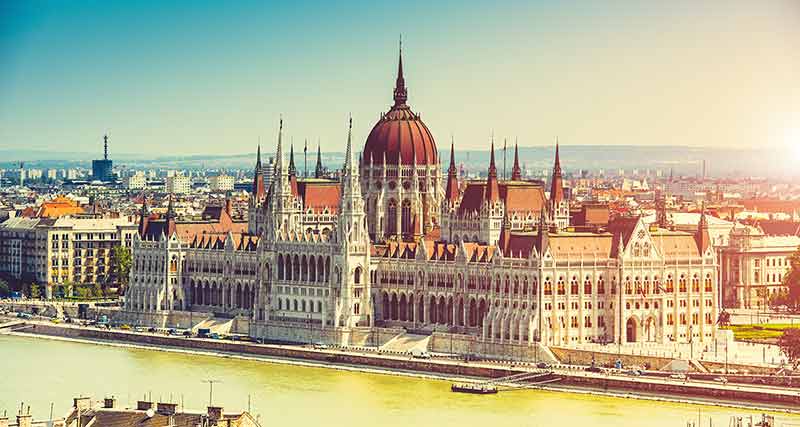
The Hungarian Parliament Building is another must-see in Budapest.
Built in the Neo-Gothic style and completed in 1902, it’s one of the best examples of the prowess of Hungarian architects.
It is an impressive building with a magnificent dome and tall spires and is one of the largest parliament buildings in the world.
Take a tour of the Hungarian Parliament Building that lasts for 45 minutes and you will be taken back into Hungary’s past.
Beautiful frescoes adorn the walls, there are grand staircases, and 242 statues decorate both the inside and outside of the parliament building.
However, what is most impressive is that the inside has been decorated with half a million semi-precious stones and 40 kilograms (88 pounds) of gold leaf.
The highlight is the original St. Stephen’s crown.
The Hungarian Parliament Building is at Kossuth Lajos tér 1 – 3, 1055, Budapest.
3- Wine
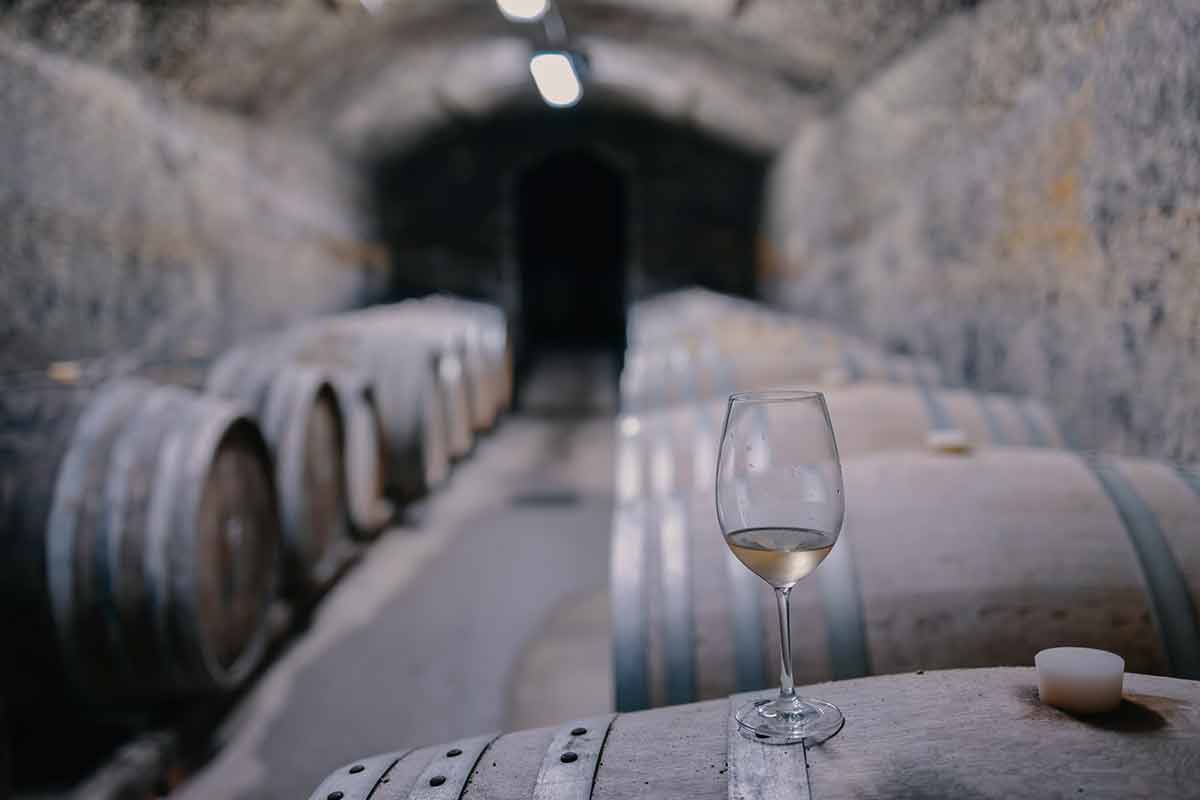
I enjoy a glass of wine and some of the best I have had have been in Hungary.
Hungarian wines aren’t as well-known as wines from countries such as France and Italy, but because of the climate and the fertile soil, excellent wines are produced.
Wine production in Hungary goes back as far as 1,000 years so they have had plenty of practice!
One of the most famous Hungarian wines produced is Tokaj Aszu, which is a sweet, white dessert wine.
Another is Bull’s Blood, a deep red wine made in Eger and Szekszard from a blend of red grape varieties, the main one being kekfrankos.
It is a rich wine with good tannins and a full body.
While you are in Hungary, visit a winery for a tasting tour and purchase your favourites to take home.
While we are on the subject of alcohol, the national drink of Hungary is Palinka, a fruit brandy made from apricots or plums and usually drunk as a shot.
4- Hearty Food
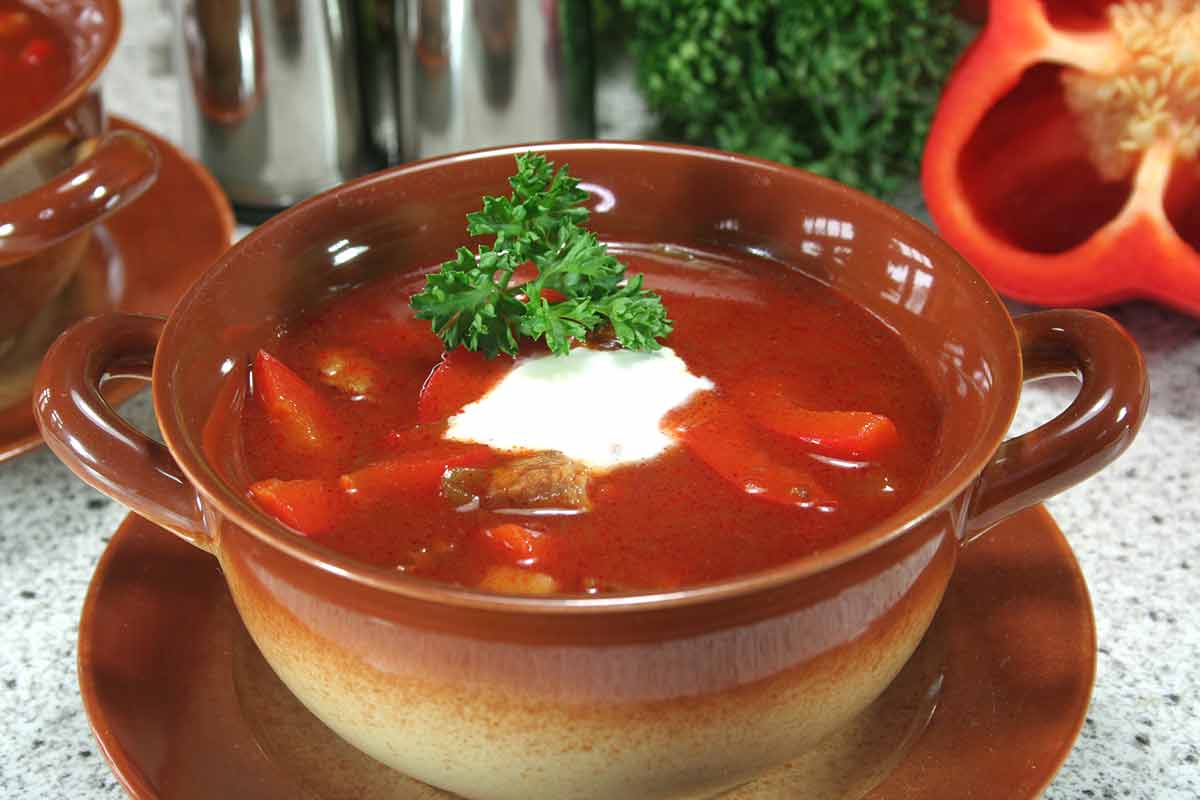
Hungary is well-known for its comfort food, and I remember the delicious dishes I enjoyed during my summers in Hungary.
The most famous dish is goulash, which is a tender beef stew with carrots, bell peppers, potatoes, and the most important ingredient, sweet paprika.
It is rich, warming and typically served with sour cream but sometimes, it is made with dumplings instead of potatoes.
Goulash soup (gulyasleves) is also popular, as is halaszle, a spicy fish soup made with hot paprika, and chicken paprikash, which is a chicken goulash.
Langos is a fried dough with a variety of toppings to choose from and a popular street snack.
The most common topping is cheese and sour cream, but ham, onions, and sausage are also popular.
You can even get langos as a dessert with jam poured over it.
When it comes to sweet treats, my mother made the best dobos torte, a traditional cake made with many thin layers of sponge, each layer filled with chocolate buttercream and covered with a clear layer of caramel on top.
I can still remember the taste. Join this Hungarian Grandma’s Tour to try local food.
5- Thermal Baths and Spas
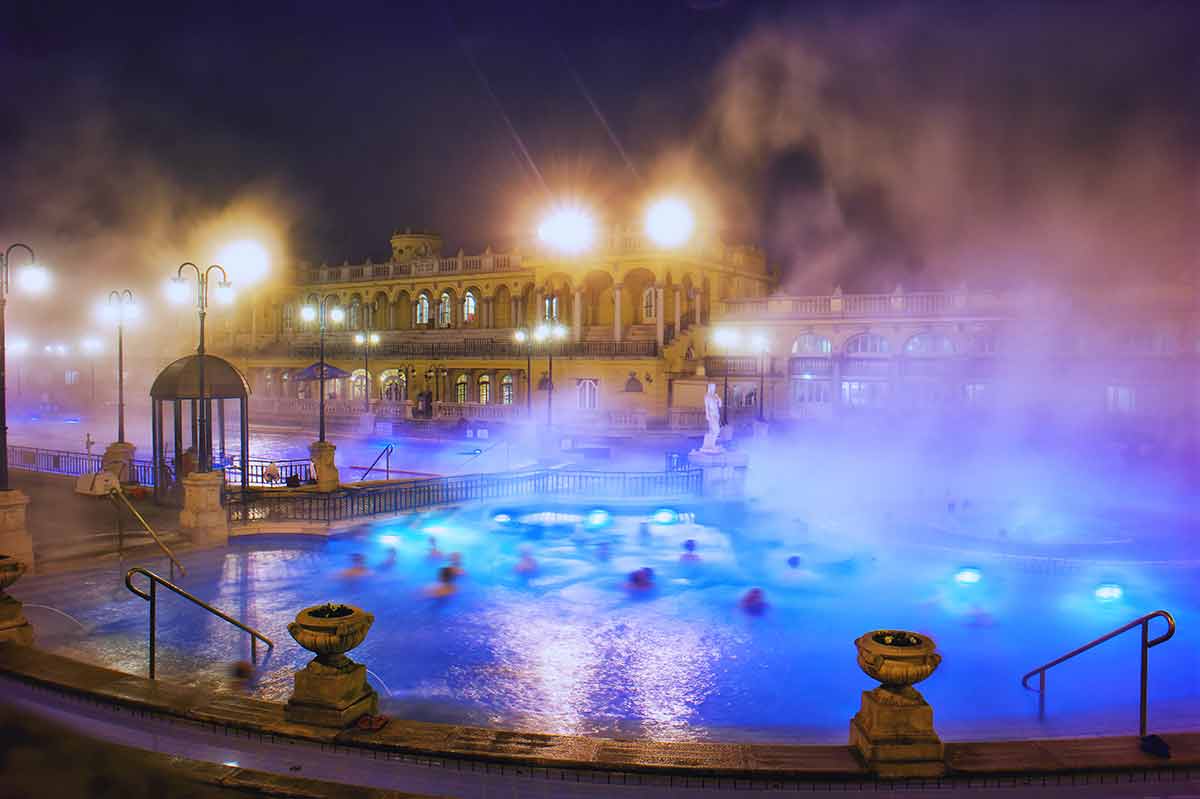
Hungary is the ‘Spa Capital of the World’ because it has over 1,000 thermal springs.
The waters from these springs are rich in minerals and have therapeutic qualities.
Because of this, many thermal baths and spas have opened throughout the country.
There are 140 of them, with 15 in Budapest.
The spa culture in Hungary goes back to ancient Rome and the Ottoman occupation reinforced this tradition.
The largest thermal bath in Europe is in Budapest and is the Szechenyi Medieval Baths.
The water comes from two thermal springs, one being 74C (165 F) and the other, 77C (170F).
The waters contain minerals such as magnesium, calcium, sulphate, bicarbonate, and fluoride.
Another large thermal bath is in the town of Szeged, where I went many years ago.
As well as the baths, the town also has a thermal lake which is popular with locals and visitors alike.
There are different types of baths throughout the country from small and simple baths for local communities to larger baths with hotels attached.
As well as thermal pools, these have leisure pools, some even with slides of different shapes and sizes.
The Szechenyi Thermal Baths are at Allatkerti Krt. 9 – 11, 1146, Budapest. Skip the lines and book your tickets here.
6- Folk Music
Traditional folk music is an important part of Hungarian culture.
Their songs tell stories about everything they feel, whether they’re happy or sad; they sing about the weather, love, how lucky they are and so on.
Hungarian folk music has a unique sound, combining duple and triple metres with a strong emphasis on rhythm.
Both Eastern and Western cultures have influenced the music.
The Hungarians use the violin, the tarogato, a woodwind instrument like a pipe, and the cimbalom, a large chordophone.
If you want to listen to Hungarian folk music, the best places to go are festivals but you can also hear folk music on a cruise, at restaurants and, not surprisingly, at weddings.
7- The Danube River
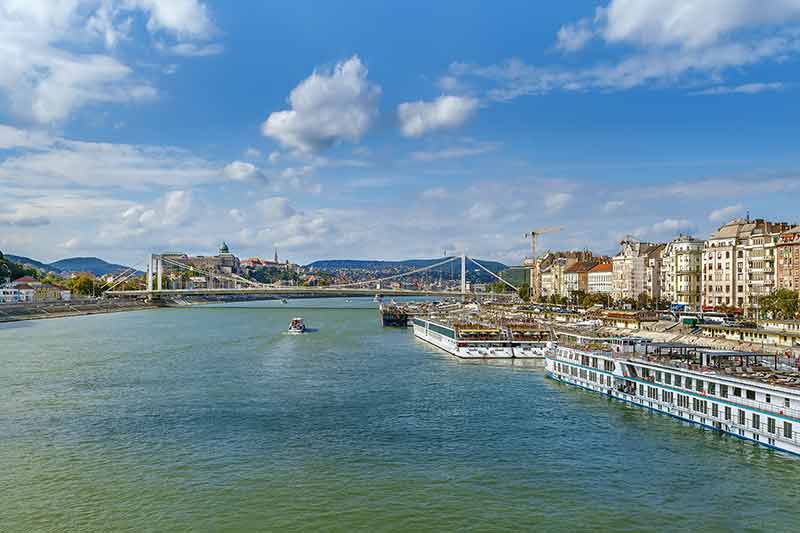
The Danube River flows through Hungary and is a popular for cruises, either for just a couple of hours, a lovely night cruise or as a longer holiday, staying on board the boat.
The second-longest river in Europe, the first being the Volga, is also popular for swimming, canoeing and fishing.
The Danube rises in the Black Forest in Germany and flows for 2850 km (1770 miles) through 10 countries: Germany, Austria, Slovakia, Hungary, Croatia, Serbia, Bulgaria, Romania, Moldova, and finally, the Ukraine where it enters the Black Sea.
The Danube runs through the capital, Budapest, and separates two parts of the city, Buda and Pest.
Buda is on the west bank of the river and Pest is on the east.
8- Harry Houdini
Harry Houdini, the famous escape artist, illusionist, and stunt performer, was born in Hungary.
Houdini was born in Budapest in 1874 and was named Erik Weisz but changed his name to Harry Houdini after his mentor, the French magician, Robert-Houdin.
Houdini performed many dangerous escapes, such as getting out of a straitjacket underwater and chains while hanging from a skyscraper.
The trick he is most known for is the Chinese Water Torture Cell, where Houdini’s feet were tied and he was lowered upside down into a tank full of water from which he had to escape.
Houdini was also an actor, aviator and inventor.
9- Ruin Bars
Ruin bars are a highlight of Budapest’s nightlife.
They are bars which have been set up in abandoned buildings and most are in the Jewish District of the city.
The concept of the ruin bar started in the year 2004 when a group of entrepreneurs rescued a building from demolition on Kazinczy Street.
They decided not to fully restore it but instead added unusual furniture and quirky decorations and then opened it as a bar which they called Szimpla Kert.
The idea took off and many more buildings were rescued and turned into ruin bars, which are sometimes used for community events during the day as well as live music venues.
Szimpla Kert holds a farmer’s market on Sunday mornings.
Szimpla Kert is at Kazinczy 14th, 1075, Budapest. A fun way to explore is to join a Ruin Bar Pub Crawl and you’ll save money on entry tickets too.
10- The Rubik Cube
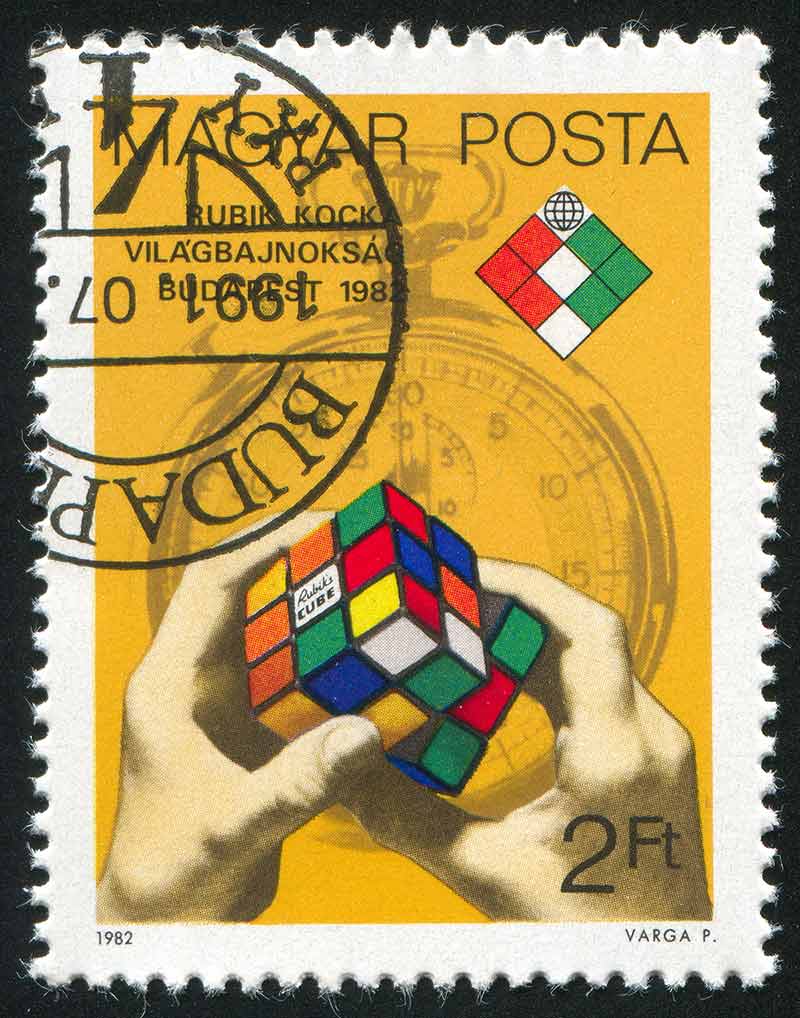
If you were around in the 1980s, you would have heard of and probably played with the Rubik Cube.
It is a large cube consisting of 26 different coloured smaller cubes, rotating on a central axis.
The cube is twisted out of its original configuration and then you have to get the same colours on each side.
It isn’t easy and around 50 books were published telling you how to conquer the puzzle.
The person who invented the Rubik Cube was a Hungarian, Erno Rubik, who went on to invent Rubik’s Magic, Rubik’s Magic Master Edition, and Rubik’s Snake, none of which were quite as popular as the cube.
During the first three years of production, 100 million authorised Rubik Cubes were produced, with a massive 500 million imitations sold.
11- Szentendre
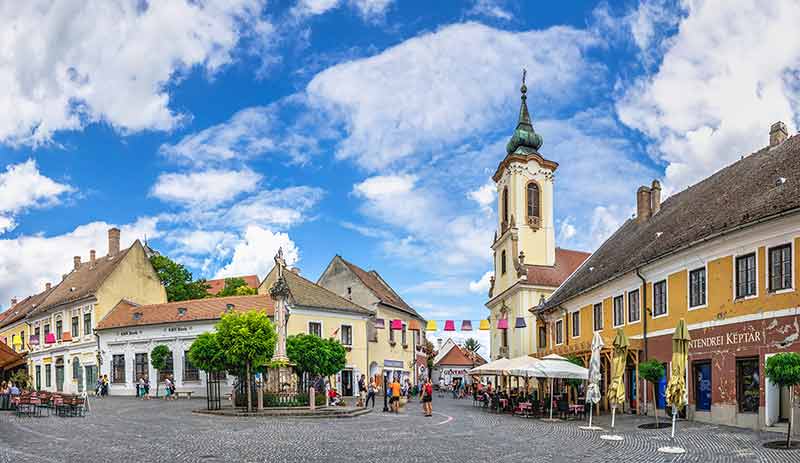
The town of Szentendre is on the banks of the Danube, quite close to Budapest.
It is a popular day trip from the capital, especially if you want to get away from the hectic pace of the city.
Szentendre is a peaceful town where you can relax over a coffee or meal and take a stroll by the river.
However, there is more to Szentendre than this.
It is also known as an artistic and cultural hub with many museums and galleries throughout the town exhibiting exciting artwork.
There is also an interesting museum known as the Szamos Marzipan Museum, where you can learn how marzipan is made and, of course, you can also buy some marzipan here.
The Hungarian Open-Air Museum showcases houses and artefacts relating to different regions of Hungary.
Most tours to Szentendre will take you to the Roman Catholic Blagovestenska Church built in the 18th century to admire beautiful Baroque and Rococo elements.
Above the wooden gate are frescoes of St. Helene and St. Constantine.
Blagovestenska Church is at Fo ter 5, 2000, Szentendre.
12- Lake Balaton
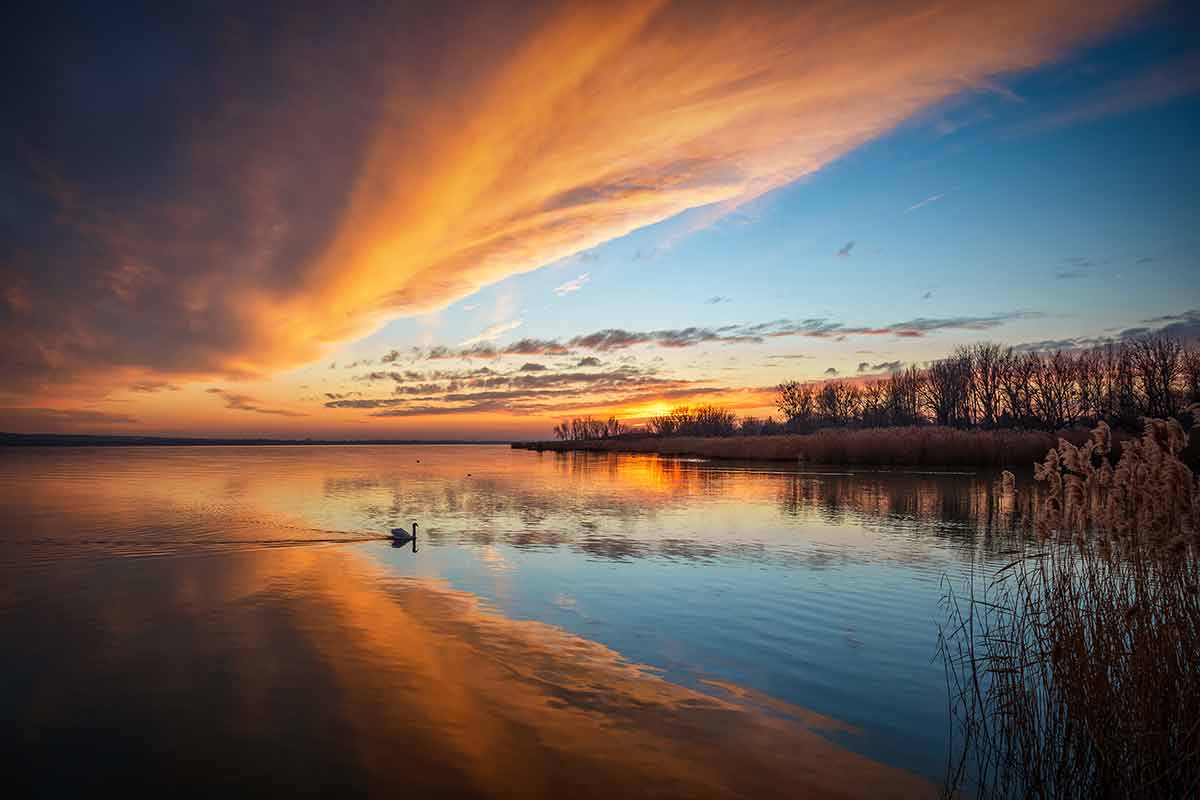
Lake Balaton is a beautiful freshwater lake, the largest in central Europe, and often called the ‘Hungarian Sea’.
It is in the western part of Hungary and is a popular holiday destination, with hotels, beaches, restaurants, cafes, and bars lining the shore.
It has a 197-km (122-mile) shoreline where you can take part in water activities, such as swimming, sailing and windsurfing.
To the north of the lake, among the hills, you will find vineyards and wineries where excellent wine is produced.
Balaton Uplands National Park is also in this area and is a good place to hike.
15km (9 miles) north of Lake Balaton, you will find the town of Vesprem which has a walled castle dating back to the 13th century and stunning frescoes in the chapel.
13- Esztergom Basilica
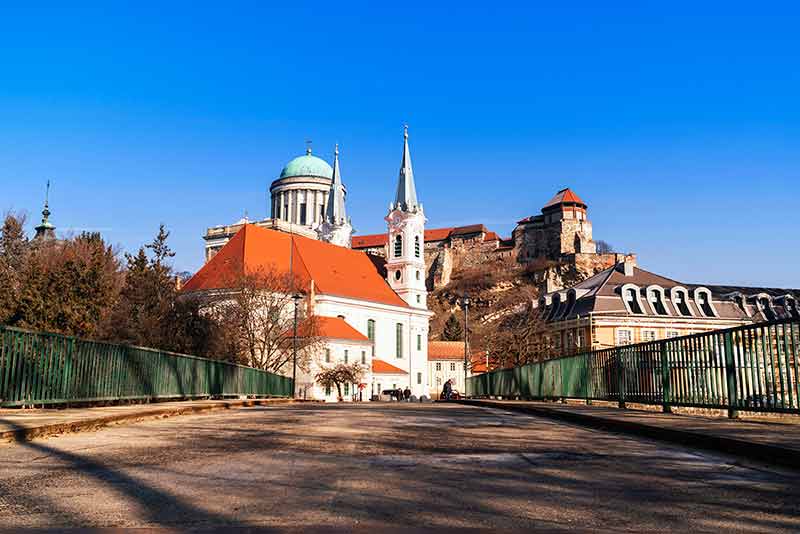
Esztergom Basilica is the largest church in Hungary and the third largest in Europe.
It is dedicated to the Assumption of St. Mary and St. Adalbert.
Perched on a hilltop, it’s designed in the Neoclassical style with beautiful frescoes and stained-glass windows.
The church also houses a collection of religious artwork and artefacts including a replica of the Holy Crown of Hungary.
The dome, at 71.5 metres (234.5 feet) is one of the tallest in the world.
For a spectacular view of the dome, cross the Danube to see it towering above the town.
You can visit this Roman Catholic Church at any time and also attend Mass.
Esztergom Basilica is at Szent Istvan ter, 2500, Esztergom. Explore Esztergom on this walking tour.
14- National Parks
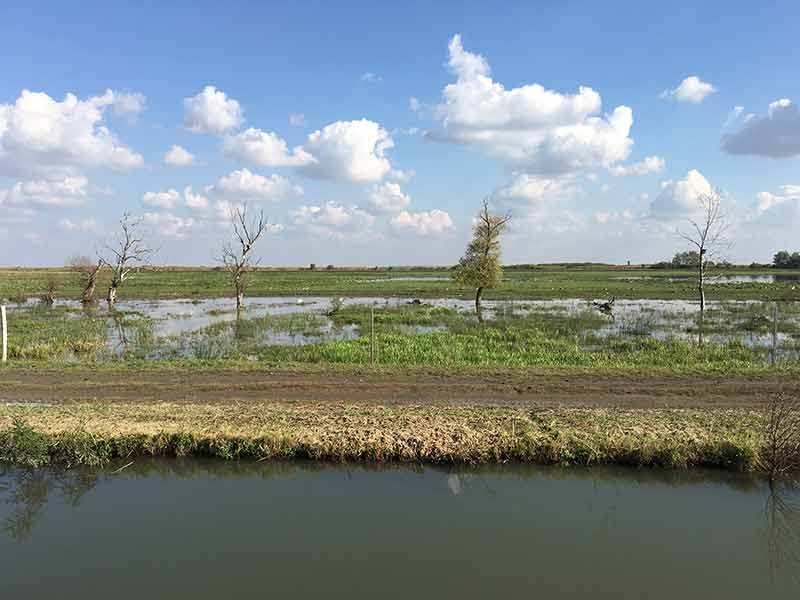
Hungary has 10 national parks which cover around 10% of the country.
One of the best is Hortobagy, which you can explore on foot, on a bicycle, or on horseback.
It covers 800 km. square (308.88 miles square) and is in the heart of the Hungarian Plain.
It has been designated as a UNESCO World Heritage Site.
Hortobagy is home to wildlife and if you are lucky, you might spot an animal or, more probably, a bird.
Animals include wild horses, grey wolves, the European wildcat, and red foxes.
Birds include cranes and white-tailed eagles.
Another very interesting National Park is in the north of the country.
It is called Aggtelek National Park, and it has an enormous karst cavern system which is connected to Slovakia.
There are around 1,200 caves and 280 on the Hungarian side are open for guided tours.
15- Hungarian Language

The Hungarian language is Uralic, unlike most European languages which belong to the Indo-European language family.
It is the official language of the country and one of the 24 official languages of the European Union.
Hungarian doesn’t have much in common with any other languages and is generally only spoken in Hungary and parts of neighbouring countries that used to be part of the Austro-Hungarian Empire, such as Serbia and Austria.
My aunt and her family lived in Serbia just by the Hungarian border and 90% of the people in that area were Hungarian.
Hungarian is a difficult language to learn for the English speaker and I can vouch for that.
I did try to learn it as a teenager and found it very hard.
Both the grammar and pronunciation are complex.
For a start, there are 14 vowels, not five.
When it comes to consonants, they often come in clusters, and it can be difficult to know how to pronounce them.
There are unusual pronunciations, such as sz is pronounced as s while s is sh.
Another thing that makes Hungarian difficult, is that it is an agglutinative language.
This means that instead of individual prepositions, prefixes and suffixes are added to words.
Sometimes a sentence can be just one very long word.
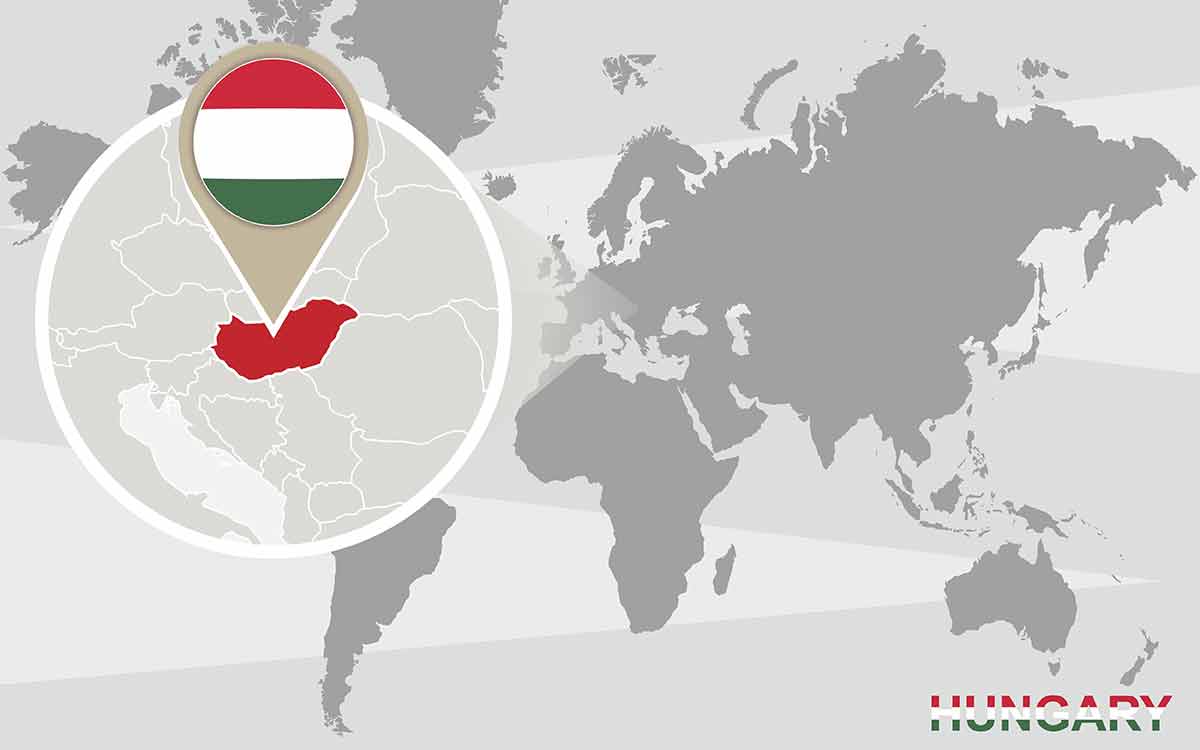
You may also be interested in:
- What is Turkey known for?
- What is Portugal known for?
- What is Greece known for?
- What is France known for?
- What is Belgium known for?
- What is Switzerland known for?
- What is Poland known for?
- What is Australia known for?
- What is Mexico known for?
- What is Germany known for?
- What is Croatia known for?
- What is Hungary known for?
- What Is Romania known for?
- What is The Netherlands known for?
- What is Scotland known for?
- What is Canada known for?
- What is Japan known for?
- What is China known for?
- What is Singapore known for?
- What is Vietnam known for?
- What is Thailand known for?
- What is Cuba known for?
- What is Argentina known for?
- What is Colombia known for?
- What is Spain known for?
- What is Italy known for?
- What is Ireland known for?
- What is Oregon known for?
- What is Colorado known for?
- What is Tennessee known for?
- What is Hawaii known for?
- What is Alabama known for?
- What is Illinois known for?
- What is Mississippi known for?
- What is Nevada known for?
- What is Maine known for?
- What is Idaho known for?
- What is Delaware known for?
- What is Maryland known for?
- What is Wisconsin known for?
- What is Miami known for?
- What is Virginia known for?
- What is West Virginia known for?
- What is Massachusetts known for?
- What is Boston known for?
- What is Florida known for?
- What is Kentucky known for?
- What is Indiana known for?
- What is Montana known for?
- What is Nebraska known for?
- What is Pennsylvania known for?
- What is Vermont known for?
- What is Arizona known for?
- What is California known for?
- What is South Carolina known for?
- What is North Carolina known for?
- What is Texas known for?
- What is Michigan known for?
- What is Ohio known for?
- What is Louisiana known for?
- What is Oklahoma known for?
- What is New York known for?
- What is Georgia known for?
- What is Utah known for?
- What is Connecticut known for?
- What is Rhode Island known for?
- What is Iowa known for?
- What Is Minnesota known for?
- What is New Hampshire known for?
- What is Arkansas known for?
- What is New Jersey known for?
- What is Missouri known for?
- What is North Dakota known for?
- What is South Dakota known for?
- What is Wyoming known for?
- What is Alaska known for?
- What is Washington known for?
- What is Seattle known for?
- What is New Mexico known for?
- What is Kansas known for?
- What is San Francisco known for?
- What is Chicago known for?
- What is Denmark known for?
- What is Norway known for?
- What is Sweden known for?
Plan Your Trip

Rent A Car – Find the best car rental rates at Discover Cars. They compare car hire companies to provide you with the best deal right now.

Find A Hotel – If you’re curious about this article and are looking for somewhere to stay, take a look at these amazing hotels.
